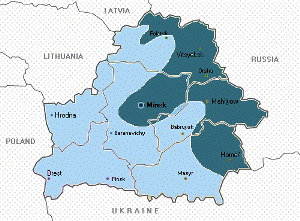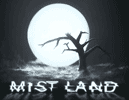experts in BELARUSIAN technical translations
ATT offers the services of experienced and professional translators of the Belarusian language of various subjects and specializations. All of them are able to perform high-quality and professional translations of standard and custom specialized texts in the fields they specialize. The main task of our technical translation bureau is to unite and direct the work of various specialists. And also control of the translation process and the subsequent editing of the completed translation, the so-called revision of the translation by an editor.

800K
Documents succesfully translated
110+
Regular customers
98%
Grateful testimonials
24/7
We work on your orders

We have been doing translations of varying difficulty levels since 2001. Moreover, our translation agency has its roots in Belorussia, in the glorious city of Gomel. Where we have worked for the first 4 years of our existence. During these years, we managed to participate in a large number of translation projects, many of which involved the Belarusian language. Mostly we translated from Russian into Belarusian, but we also worked with other pairs of translations: from English into Belarusian, from Belarusian into Lithuanian, Latvian and other languages.
We do not strive to employ just any specialist translator-philologist in each area of specialisation, but rather a person who has significant experience in the chosen specialisation. For example, a music specialist is unlikely to be able to translate a charter or a non-disclosure agreement. A builder or a mechanic will be useless in translating an article about a toothache. In addition to knowledge of a foreign language, in this case, the Belarusian language, you need to possess a huge base of special terms, necessary for use and used specifically in the project you need. Moreover, a non-native speaker of Belarusian is unlikely to be able to translate into this language in a quality manner, as well as translation from Belarusian is best left to a Russian-speaking translator who can best select a term or vocabulary to clearly describe the data to be translated.
Our Pricing
MT/AI translation and proofreading
€
0,05
/word
best speed and price
average quality
automation
for everyday use
Professional Translation
€
0,08
/word
file preparation
translation
quality control
signed/stamped certification
complicated file formats
Premium translation
€
0,12
/word
translation
editing
quality control
formatting included
any delivery format
Video ABOUT OUR SERVICE
Coming soon…
What do you order most often?
If we exclude purely notarial translations of documents, the most technical orders we receive are in labelling and packaging of Russian products to be delivered to Belarus. Hundreds of labels of all kinds of confectionery products, cereals and various sunflower oils have been translated over the years of our work. We have also often translated powers of attorney and consents for legal actions between citizens of the Russian Federation and Belarus. Medical extracts from hospitals in the Republic of Belarus have been translated several times. We have translated multilingual instructions from English into Belarusian, among other things. When it comes to technical translation, the Belarusian language was practically not used here. The majority of technical specialists, for example, use Russian, not Belarusian, when commissioning brewing equipment. But this is not surprising, as Russian is the second official language in the country.
Interesting facts about Belarus AND ITS language

The longest street in Belarus is Independence Avenue in Minsk (Prospect Nezalezhnastsi). This street has had over 10 different names throughout history and stretches about fifteen kilometers.
Belarus has its very own ghost! The Black Lady of Nesvizh is said to be the spirit of Barbara Radziwill, wife of Polish King Žygimont Augustus. The legend of the Black Lady has been around for over 450 years. It all started because royals back then couldn’t marry for love, only for political duty.
In 2015, Belarusian motifs hit the fashion scene in Paris. Valentino designers Maria Grazia Chiuri and Pierpaolo Piccioli drew inspiration from Marc Chagall’s paintings. Belarusian traditional patterns looked absolutely stunning on the runway.
Belarus was one of the first countries in Europe to print its own Bible back in 1517. The pioneer printer Francis Skorina began his work in Prague, printing 23 illustrated Bibles in Old Belarusian. He later moved to Vilna in the early 1520s and set up a publishing house. Skorina’s work stood out for its high-quality printing, unique illustrations, and distinctive fonts.
Some facts about the language you probably didn’t know
- Belarusian belongs to the East Slavic languages. It is mainly used in the Republic of Belarus, where it is the official language. Also a small number of speakers live in Ukraine, Poland and the Czech Republic.
- Belarusian language has three alphabets at once – Cyrillic, Latin and Arabic script. The first was used since the 14th century, the Latin alphabet came later, when the territory of modern Belarus was part of the Grand Duchy of Lithuania. As for the Arabic script, it appeared in the 16th century, thanks to the Lithuanian Tatars, who adopted the local dialect, but retained the usual Arabic letters.
- It is believed that the process of separating Belarusian into an independent language began in the 14th century. It was when the West Russian literary and written language was formed, which today is called Old Belarusian. Until 1696 it was one of the official languages of the Grand Duchy of Lithuania (along with Latin and Polish). Then, after the partition of the Polish-Lithuanian Commonwealth, West Russian was supplanted by Russian.
- For a long time Belarusian existed solely as a language of the common people, surviving against constant pressure from Russian and Polish. In the 19th century it was actually recreated anew by the efforts of intellectuals. But it became possible to use it for publishing books and newspapers only after the 1905 revolution. Until then, Belarusian was not recognized by Russia as an independent language. It was considered only one of the dialects of Russian.
- The Belarusian language has preserved a large number of words with Old Slavic roots. At the same time, it has a lot of borrowings from Polish and Russian, as well as German and the ubiquitous Latin.
- The modern Belarusian language has two grammatical norms – the official orthography and the so-called Tarashkevitsa, also known as the classical spelling. The latter appeared in 1918 through the efforts of the political figure, linguist and translator B. A. Tarashkevich. The need arose in connection with the independence of Belarus, which resulted in the formation of the Belarusian People’s Republic. Tarashkevitsa was officially used until 1933, when the Belarusian language was reformed, which was unofficially called “naromovka”. Its distinctive feature was the forced introduction of some norms inherent in the Russian language.
- One of the distinctive features of Belarusian is the letter Ўў (u short or “neskladowe”). Moreover, this letter has become a peculiar symbol of the language; in 2003, a monument to it was even erected in Polotsk. It is also willingly used as a logo by various media projects related to the Belarusian language.
- There is also such a notion as “trasianka”, which is a rough mixture of Russian and Belarusian languages. The term emerged in the 80s of the last century, although such a linguistic mixture was first mentioned in the 30s. The word “trasyanka” comes from the name of low-quality hay, obtained by mixing dry grass with freshly cut grass. A similar phenomenon exists in neighboring Ukraine, where the haphazard mixing of Ukrainian and Russian is called “surzhik”.
SOME OF OUR CUSTOMERS





Frequently Asked Questions
What kind of experience do your translators have with technical documents in Belarusian, especially in fields like engineering, medical, or IT?
Our translators are total pros when it comes to technical stuff. They’re native Belarusian speakers with advanced degrees in fields like engineering, medicine, and IT. They’ve tackled everything from complex engineering blueprints to detailed medical research papers. So, no worries—your technical documents are in good hands.
How do you make sure the technical terms in your Belarusian translations are accurate and consistent?
We’ve got a solid system for that. We use top-notch translation tools and have extensive databases of industry-specific terms. Every document gets a thorough review by subject matter experts and senior linguists. Plus, we create custom glossaries and style guides for each client to keep everything consistent and spot-on.
How do you keep my sensitive technical documents secure during the translation process?
We take security super seriously. We use encrypted file transfers, secure servers, and strict access controls. Everyone on our team signs non-disclosure agreements (NDAs) to protect your info. Plus, we comply with international data protection standards like GDPR, so your documents are safe with us from start to finish.
What’s your usual turnaround time for technical translations to and from Belarusian, and can you handle rush jobs?
We’re all about meeting deadlines. Normally, we can get technical translations done in about 5-7 business days, depending on how complex and long the documents are. But if you’re in a hurry, we offer rush services that can deliver in 24-48 hours. We understand tight schedules and are committed to getting your translations done on time without cutting corners.
Testimonials

This is not the first time I have come to this office. Everything is always quick, clear, the employee is very polite and it is always a pleasure to come back here.

Lucia Grey
Belarusian to Russian

Excellent translation agency. Translation of diploma with additions from En to By was done good and quickly. The prices are reasonable. The staff is very polite and courteous.

Alberto Marazzi
English to Belarusian
Have a PROJECT?
Contact us any time to get free quatation and all the answers to your possible questions.




Leave a Reply